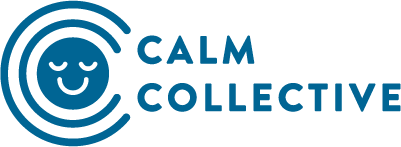How can we draw better boundaries at work?
In our pursuit of maximum productivity and efficiency, it can be hard to draw boundaries at work. As the pandemic ushers in an era of remote work and constant interconnectivity, work-life boundaries have also been increasingly blurred. These sentiments resonated with our panellists, Egan Hwan, Emmy-Lou Quirke (ESG & Wellbeing Lead, PwC Singapore Junior Board) and Darishini Thiyagarajan (Social Media Lead, RICE Media), who were part of our March talk “How can we draw better boundaries at work?”. During the talk, our panellists outlined some steps we can take to set better work boundaries and also shared their personal experiences around it.
Here are some takeaways from the talk:
1. Work boundaries are important
There was a general agreement on the importance of work boundaries. Work boundaries may be hard to set but the benefits of doing so can actually enable one to work smarter and build better relationships. In addition, it can help regulate one’s emotional and mental health to prevent burnout.
Emmy defined work boundaries as the alignment of her contributions for the company and the personal values and purpose that she’s trying to create. With a role in senior management, she also emphasised the need to protect employees working under her. While it is important that the employees do their work, Emmy believes they should not be burnt out at the end of the day. From a hierarchical perspective, if that “layer” of workers get burnt, “the work doesn’t get done”.
For Darishini, boundaries are a form of protection as they “help an individual safeguard themselves from anything that’s detrimental to their mental and physical well-being”. Darishini also provided a metaphor where she likened herself to a candle. “I have to be very careful because I don’t want to burn the midnight oil too fast,” said Darishini.
Among the panellists, there was also a common sentiment that productivity stems from individuals who are not tied down by exhaustion from overworking. In other words, drawing appropriate work boundaries can help us manage our well-being and by extension, put us in a better position to fulfil our organisational responsibilities in the long run.
2. When your boundaries are being violated, it is ok to take a step back and make sense of your feelings and reactions
When someone violates our boundaries, it is normal to react and voice our opinions immediately. However, there may be times where there is a need for us to step back and reflect on the situation and our feelings to avoid acting rashly.
Emmy recommended that we first go back to ourselves and reflect on the situation we were in. “Get yourself to a place of safety and security, and talk to someone whom you trust and know”, she suggested. Emmy believes that people we’re close to — our friends, family or partner — might have an agenda because they know us and want to give advice that will help us. It is therefore better to find someone more objective — like a coach or a therapist — as they are likely able to define the security that we need and bring us back to a place of regulation where we can look back on the situation rationally.
Emmy also introduced the concept of psychological safety, which “is the belief that you won’t be punished or humiliated for speaking up with ideas, questions, concerns, or mistakes”. Emmy explains that cracking jokes and making fun of one another might be acceptable if we’re in an agreed psychologically safe environment, where there is already an established level of trust. However, if we’re in a new environment or if someone engages in unacceptable actions repeatedly, that could verge on bullying or inappropriate behaviour. It is therefore important that we check-in with ourselves regularly to determine how psychologically safe we feel in our current environments.
3. Communicate effectively
Communicating the need to set boundaries may be a daunting task due to the fear of being labelled weak or vulnerable. To overcome this, both Darishini and Emmy provided some advice on how we can communicate our concerns effectively to employers.
While Darishini acknowledges the difficulty of such conversations, she believes it is still worth taking the leap to speak about such issues with our managers. “Honesty is what really will help you communicate the need and intent behind the boundaries you want to draw,” said Darishini.
“If you feel like your manager might not be as open or as empathetic as you might want them to be, perhaps it might help for you to make that first step to reach out,” she explained. “Just be honest and let them know what your concerns are. I’m sure they’ll be open to negotiating any kind of help or ways in which the workload can be shared.”
To add on, Emmy also noted the cultural and generational shift to the idea of “clarify early, raise things early”. It is important to ask questions and get as much information as possible upfront before starting on the work you’re assigned to. Emmy also believes that by communicating problems early on, they can be tackled much more effectively. “If I know I’m not going to get the work done at the time they’re asking for, I’d make sure to raise it early,” she says. It could also be good to provide an alternative solution when communicating these problems to your employers.
